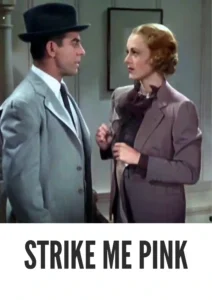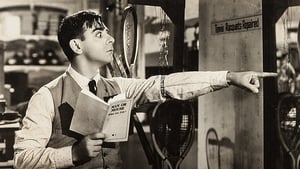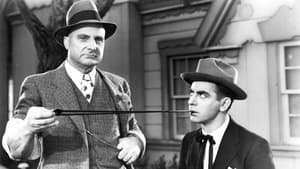Contact: info@alwanfilm.com
Video Sources 0 Views
- Strike Me Pink 1936 Colorized


Strike Me Pink 1936 Colorized
Synopsis
Table of Contents
ToggleStrike Me Pink 1936 Colorized Review: A Musical Comedy That Shines in Color

Introduction
Strike Me Pink (1936) is a delightful musical comedy that combines elements of slapstick, romance, and vibrant song-and-dance numbers. Directed by Norman Taurog and starring the ever-charismatic Eddie Cantor, this film is a gem from the golden age of Hollywood, featuring the kind of lighthearted entertainment that was popular during the 1930s. While originally released in black and white, Strike Me Pink has since been colorized, adding a new dimension to its already lively presentation. In this article, we will explore how the colorized version of Strike Me Pink enhances the viewing experience, diving deep into the performances, plot, and themes, and discussing the film’s impact within the broader context of musical comedies from that era.
Check The Full Colorized Movies List
Check Our Colorized Movies Trailer Channel
Understanding Strike Me Pink 1936 Colorized: Director, Cast, and Genre
Director’s Vision
Norman Taurog, who helmed Strike Me Pink, was a prolific director known for his work across multiple genres, from musicals to comedies and even family films. Taurog’s direction of Strike Me Pink showcases his talent for pacing a story with energy, humor, and heart. His vision for this film was to craft an uplifting, humorous, and visually captivating musical, filled with laughter, clever choreography, and a plot driven by a series of comedic misunderstandings and slapstick humor.
Taurog’s ability to balance humor with heartfelt moments and his knack for musical staging made Strike Me Pink stand out as a quintessential 1930s musical comedy. His creative direction is evident in the film’s tight comedic timing, the effervescent musical numbers, and the engaging chemistry between the lead actors.
The Iconic Performance of Actors
At the heart of Strike Me Pink is Eddie Cantor, one of the most popular entertainers of his time. Cantor plays Eddie Pink, a timid and bumbling amusement park manager who, through a series of comical twists, finds himself in over his head with gangsters and romantic entanglements. Cantor’s performance is full of his signature high-energy antics, physical comedy, and likable charm. His wide-eyed expressions and exaggerated reactions to increasingly ridiculous situations make him a joy to watch and serve as the comedic anchor of the film.
Ethel Merman, a powerhouse performer known for her brassy voice and stage presence, plays Sally, Eddie’s love interest. Merman’s bold performance contrasts with Cantor’s nervous character, adding a dynamic energy to their on-screen relationship. The chemistry between Cantor and Merman, along with Merman’s show-stopping musical numbers, elevates the film and adds an extra layer of fun to the narrative.
The supporting cast includes striking performances from Sally Eilers, as the sassy, fast-talking character Jenny, and William Frawley, who plays the tough but lovable park owner. Each actor contributes to the film’s lively pace, with memorable moments and humorous dialogue sprinkled throughout.
Exploring the Genre
Strike Me Pink fits squarely into the musical comedy genre, a staple of 1930s Hollywood. Musicals of this era were known for their extravagant production numbers, lighthearted plots, and catchy songs. These films provided an escape for audiences during the Great Depression, offering entertainment that was colorful, optimistic, and full of life. Strike Me Pink embodies these characteristics, with its buoyant musical score, energetic dance routines, and a story that, while simple, is loaded with humor and heart.
The film also contains elements of screwball comedy, a subgenre characterized by fast-paced dialogue, absurd situations, and the clash of contrasting personalities. The combination of musical and comedic elements in Strike Me Pink makes it a lively, entertaining experience that still holds appeal today.
Exploring the World of Strike Me Pink 1936 Colorized: Plot and Characters
Detailed Synopsis
The plot of Strike Me Pink revolves around Eddie Pink (played by Eddie Cantor), a meek and mild-mannered man who takes over the management of Dreamland, a bustling amusement park. Initially overwhelmed by the rowdy employees and the general chaos of the park, Eddie quickly finds himself in hot water when he accidentally gets entangled in a conflict with local gangsters who are trying to extort money from the park’s owner.
At the same time, Eddie is hopelessly in love with Sally (played by Ethel Merman), a glamorous entertainer who works at the park. As Eddie tries to win her affection, he must also deal with Jenny (played by Sally Eilers), a sharp-tongued woman who is convinced Eddie is secretly a notorious crime boss in disguise.
What follows is a series of comedic misunderstandings, high-energy musical numbers, and slapstick moments that showcase Eddie Cantor’s physical comedy and charm. The climax of the film involves Eddie outsmarting the gangsters, saving the park, and finally winning Sally’s heart in a grand musical finale.
The characters in Strike Me Pink are archetypal yet endearing. Eddie Pink is the classic underdog, while Sally is the glamorous and somewhat unattainable love interest. The gangsters, led by the gruff yet comedic William Frawley, provide a humorous take on the usual mobster tropes, adding an element of danger and farce to the plot. Jenny’s character, with her sharp wit and fast-paced dialogue, injects additional humor into the film, rounding out a cast of quirky and memorable personalities.
The Art of Film Colorization
Understanding the Process
Film colorization is the process of adding color to black-and-white films, either manually or through digital technology. Early methods of colorization required painstaking work, where each frame of the film was individually hand-colored. Over time, digital technology made the process more streamlined, allowing for greater accuracy in recreating realistic color schemes.
For Strike Me Pink, the colorization process was designed to enhance the visual spectacle of the musical numbers, particularly the lavish sets of the amusement park and the costumes of the performers. The bright, candy-colored palette used in the colorized version gives the film a fresh and vibrant look, aligning with the cheerful and whimsical tone of the movie.
Development Over Time
The colorization of films has developed significantly since the technique first appeared in the mid-20th century. Early attempts at colorizing films were often criticized for looking unnatural or inaccurate, as the technology was still limited. However, with advances in digital software, colorization has become more sophisticated, allowing filmmakers to more accurately replicate the look and feel of original sets, costumes, and lighting. Modern colorization is now considered a legitimate way to reintroduce classic films to new audiences, providing a visually engaging experience that retains the integrity of the original work.
Early Colored Films: A Brief History
Emergence of Early Colored Techniques
Before the advent of full-color motion pictures, filmmakers experimented with various techniques to add color to their films. Early methods included tinting and toning, where color was applied to the entire film or specific scenes to evoke a particular mood. These techniques, while limited in their scope, were popular in the silent film era.
The introduction of Technicolor in the 1930s marked a turning point in the history of film. Technicolor was the first widely successful color process, using a combination of red, green, and blue filters to produce a full spectrum of colors on screen. The use of Technicolor in major productions transformed the visual landscape of Hollywood and helped to establish color films as a viable and popular format.
Strike Me Pink 1936 and Its Early Colored Version
The Decision to Release in Color
The decision to release Strike Me Pink in a colorized format was a strategic one, intended to breathe new life into the film and attract a younger, modern audience. The colorful world of the amusement park, the elaborate costumes, and the energetic musical numbers naturally lend themselves to colorization. By adding vibrant hues to the film, the colorized version amplifies the film’s whimsical and joyful nature, making it even more appealing to contemporary viewers.
Impact on the Visual Narrative
Colorization adds a new layer of visual richness to Strike Me Pink, enhancing the film’s already dynamic presentation. The bright and lively colors emphasize the playful tone of the film and highlight key moments, such as the large-scale musical sequences and Eddie’s slapstick antics. While the original black-and-white version has its own charm, the colorized version offers a visually engaging experience that complements the film’s energetic pacing and humor.
The Debate Over Film Colorization
Controversy Surrounding Colorization
The colorization of classic black-and-white films has long been a topic of debate among filmmakers, critics, and film enthusiasts. Many argue that colorization can detract from the artistic integrity of the original work, as directors and cinematographers often use black-and-white for specific aesthetic reasons. The concern is that adding color may alter the tone and mood of a film, ultimately changing the viewer’s experience.
On the other hand, proponents of colorization see it as a way to preserve and revitalize classic films, making them more accessible to modern audiences. For younger viewers, who may be less inclined to watch black-and-white films, colorization can make older films more visually appealing and help keep them relevant in today’s cinematic landscape.
Examining Strike Me Pink 1936 as an Early Colored Film
Enhancement or Distraction?
The colorization of Strike Me Pink (1936) is largely seen as an enhancement rather than a distraction. The film’s light-hearted nature, comedic tone, and musical numbers are well-suited to the vibrant colors added in the updated version. The colorized version brings the world of Dreamland to life, with its carnival rides, bustling crowds, and elaborate costumes looking even more fantastical in color.
However, there are purists who may argue that the original black-and-white version better captures the era in which the film was made. The contrast and shadows inherent in black-and-white cinematography create a different visual aesthetic, one that can evoke nostalgia and a sense of timelessness. Ultimately, the choice between the black-and-white and colorized versions comes down to personal preference.
Influence and Legacy: Strike Me Pink 1936 Colorized’s Impact on Cinema
Shaping the Musical Comedy Genre
Strike Me Pink (1936) contributed to the development of the musical comedy genre during Hollywood’s Golden Age. Its blend of slapstick humor, romantic entanglements, and catchy musical numbers set the template for many future films in the genre. Eddie Cantor’s performance, in particular, became an archetype for the comedic leading man in musical comedies—charismatic, funny, and able to carry both the humor and the heart of the story.
Influence on Later Musical Films
The success of films like Strike Me Pink paved the way for later musicals in the 1940s and 1950s, particularly the lavish MGM productions that became hallmarks of the genre. The film’s combination of comedy, romance, and music would be seen again in films like Singin’ in the Rain (1952) and An American in Paris (1951), both of which built upon the foundations laid by earlier musical comedies.
Director’s Cinematic Legacy: Beyond Strike Me Pink 1936 Colorized
Norman Taurog’s Influence on Filmmaking
Norman Taurog’s career spanned over four decades, with credits that included some of the most beloved comedies and musicals of Hollywood’s Golden Age. His ability to craft films that balanced humor with heart made him a sought-after director, especially for projects that required both comedic timing and a light touch. Taurog’s influence can be seen in later filmmakers who continued the tradition of blending genres to create films that entertain while also engaging audiences on an emotional level.
Themes Explored in Strike Me Pink 1936 Colorized
Lighthearted Comedy with Underlying Themes
While Strike Me Pink is primarily a lighthearted musical comedy, it does touch on deeper themes such as self-confidence, perseverance, and the triumph of the underdog. Eddie Pink’s journey from a timid, insecure man to a confident leader parallels the common theme of personal growth found in many films of the era. The film also explores themes of love and loyalty, as Eddie’s determination to win Sally’s heart drives much of the narrative.
Reception and Controversy Surrounding Strike Me Pink 1936 Colorized
Initial Reviews and Audience Reactions
When Strike Me Pink was first released, it was well-received by audiences and critics alike. Eddie Cantor’s performance was praised for its comedic brilliance, and the film’s musical numbers were lauded for their energy and spectacle. The film’s combination of slapstick humor and romantic charm made it a hit during a time when audiences were looking for escapist entertainment.
However, as with many colorized films, the decision to add color to Strike Me Pink sparked some controversy among film purists. While many viewers appreciated the visual enhancement, others felt that the original black-and-white version better captured the film’s era and mood.
Where to Watch Strike Me Pink 1936 Colorized6 Online
For those interested in watching Strike Me Pink (1936), the film is available on several streaming platforms. Amazon Prime Video, Criterion Channel, and Turner Classic Movies often feature both the original black-and-white version and the colorized edition. DVD and Blu-ray versions of the film, which include both versions, are also available for purchase from major retailers.
FAQs About Strike Me Pink 1936 Colorized
Q: What is the significance of the colorized version of Strike Me Pink (1936)?
A: The colorized version of Strike Me Pink adds a new layer of visual vibrancy to the film, enhancing the musical numbers and the carnival-like atmosphere of the amusement park setting.
Q: Who directed Strike Me Pink (1936)?
A: The film was directed by Norman Taurog, an accomplished filmmaker known for his work in comedies and musicals during the Golden Age of Hollywood.
Q: What themes are explored in Strike Me Pink (1936)?
A: The film explores themes of personal growth, self-confidence, and love, all framed within a comedic narrative of misunderstandings and slapstick humor.
Q: How has Strike Me Pink influenced later films?
A: Strike Me Pink helped shape the musical comedy genre, influencing later films that blended humor, romance, and musical spectacle, such as Singin’ in the Rain.
Conclusion
Strike Me Pink (1936) stands as a classic example of 1930s Hollywood musical comedies, full of charm, humor, and lively musical performances. The colorized version of the film adds an extra layer of visual appeal, highlighting the whimsical world of Dreamland and enhancing the film’s playful tone. Whether in its original black-and-white format or its more modern colorized version, Strike Me Pink continues to entertain audiences with its energetic performances, catchy songs, and timeless humor. The legacy of this film, along with its contributions to the musical comedy genre, cements its place in Hollywood history as a lighthearted yet impactful piece of cinematic art.

















